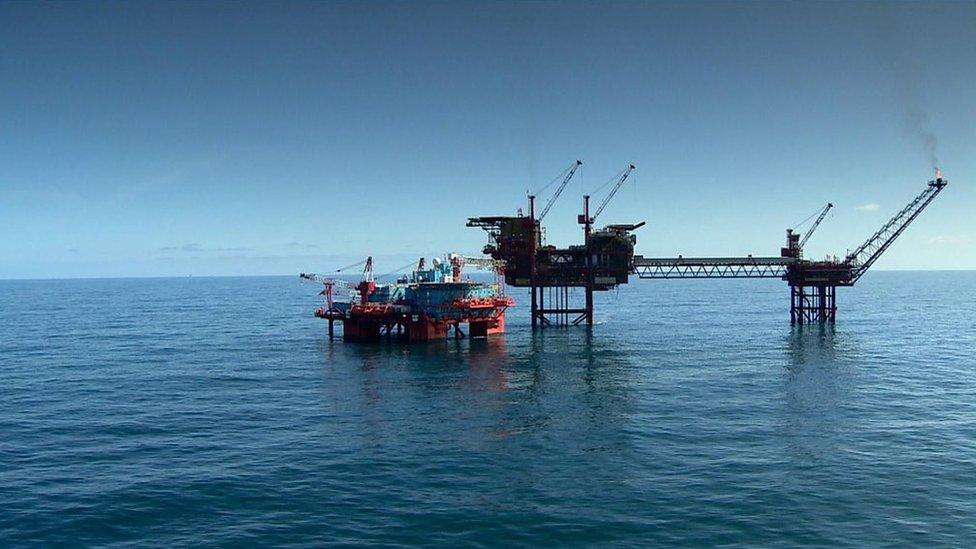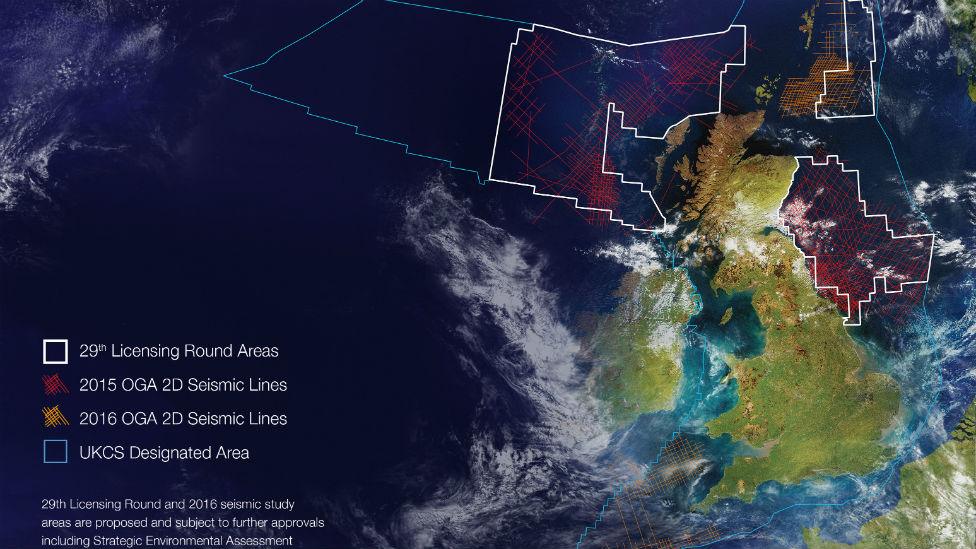Spuds and drilling bits in oil's bargain basement
- Published

It's a brave commodities trader or government finance minister who bets the farm on the future direction of the price of Brent crude oil.
After its sharp fall two years ago, the barrel price has been swilling around the $50 mark - on raised, then lowered, expectations that OPEC will cut a deal on reducing supply to raise the price. The exporters' cartel meets in Vienna on September 26th.
With a Gulf Arab nod here, an Iraqi wink there, a gnomic comment from a Russian official and an update on the state of America's oil stocks, the price gyrates a dollar or two, or three. In the past week, it's been to the downside, most recently spotted below $47.
Longer term, the consensus is on a recovery in price, partly as demand is expected to pick up, and also because low levels of exploration inevitably mean a low level of replacement reserves.
In Stavanger last week, as the offshore industry gathered for biennual Nordic bash, there was talk of exploration being as low as it's been. It's the easy bit of a budget to chop.
(Aberdeen's Offshore Europe event alternates with Offshore Norway in Stavanger - I've just checked next September, and hotel rooms start at £200 a night, with several establishments not taking bookings. Get planning!)
Deep pockets
But because a big slump in exploration activity drives down the price of exploration, with rigs at bargain basement prices (unless they've run aground on the Isle of Lewis), those with deep pockets and an appetite for risk can get spudding the seabed with drilling bits. (Spudding, in case you're wondering, is the act of breaking through the seabed.)
Statoil is such a player. It told the industry last week that it is eyeing up prospects for the Barents Sea, in inhospitable waters to Norway's north.
It becomes more attractive as seabed compression technologies replace platforms, and as drilling is now done at much lower prices, and in only half the time it was taking in 2013.
Analysis by the Edinburgh-based energy consultancy Wood Mackenzie points to a whopping $50bn of offshore investment put on ice by Norwegian developers since the price tanked two years ago.
It suggests companies should take the advantage of development prices bottoming out in the middle of 2017 before prices begin to pick up again. By the middle of next decade, we could see much higher costs as the price for going with the cyclical downturn we're seeing just now.
Some development still goes ahead. The Johann Sverdrup field is a giant, discovered amid extensively-developed areas of the Norwegian sector and not far from UK waters. It is a huge investment programme, but with the driving down of contractor costs, the scale of the field is such that costs are now down to $25 per barrel.
Seismic
Britain's exploration is in a worse position. The UK government has been urged to provide tax breaks for exploratory drilling. It hasn't chosen to offer a targeted allowance, but it has found £40m over the past two years to fund seismic surveying.
That can now be sourced at very low prices. It's a technology that involves ships trawling up and down a section of sea like a ploughing tractor, blasting air bubbles at the seabed and using long lines of floating sensors to pick up the reflected marine wave patterns, mapping the seabed and rock formations below it.

Much of the money is being targeted at new surveying of areas east of Shetland and around south-west England.
But some is being used to look again at areas that were previously surveyed. Being under water, such data can get a lot of noisy distortion. So it's worth spending a bit on cleaning it.
That's why £2.5m was contracted last week by the Oil and Gas Authority in Aberdeen, to spend on taking oldish data, and applying new techniques to it. It is then made available to the industry for next-to-nothing.
That includes seismic mapping from the early 1990s in the Minches and Firth of Clyde. Other existing data getting another look is around Cornwall, Devon and the Bristol Channel, Cardigan Bay in west Wales and Celtic Sea, Morecambe Bay and the east Irish Sea and also the seabed platform east of Shetland, which has more recently been the subject of big investments on the Mariner heavy oil field.
If the inland waters around Scotland are to see further drilling, it will be for the Scottish government to decide if it can happen.
Price pipeline
Much is made of the price of a barrel of Brent crude oil, as the key indicator in the energy market. Gas can sometimes be overlooked.
But there are interesting moves afoot in that market. Wholesale prices have fallen significantly, such that gas-fired power stations have become a different economic proposition in comparison with the high price that would be guaranteed for new nuclear capacity at Hinkley Point.
That could be part of the calculations - both financial and political - being weighed up in Downing Street on whether to go ahead with the giant plant.
Energy experts reckon that, due to maintenance on both storage and on the links from Norway to continental Europe, exports from the UK through the gas pipeline to Belgium could hit a record level this week.
- Published4 September 2016
